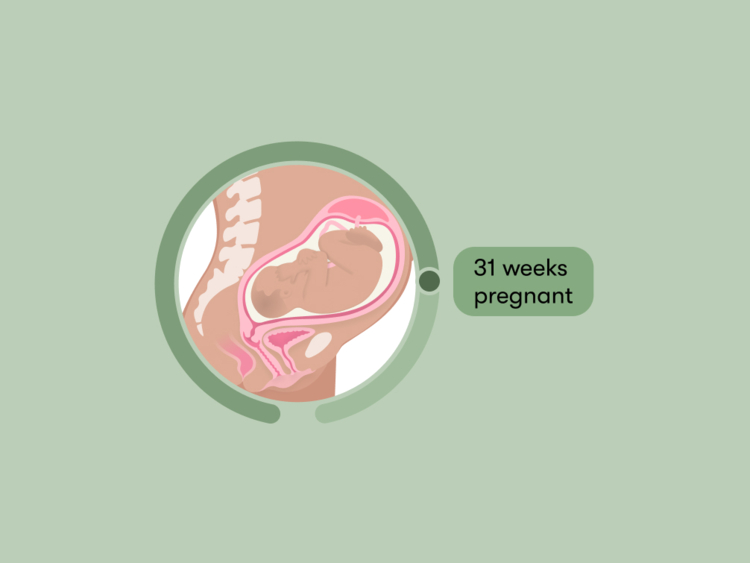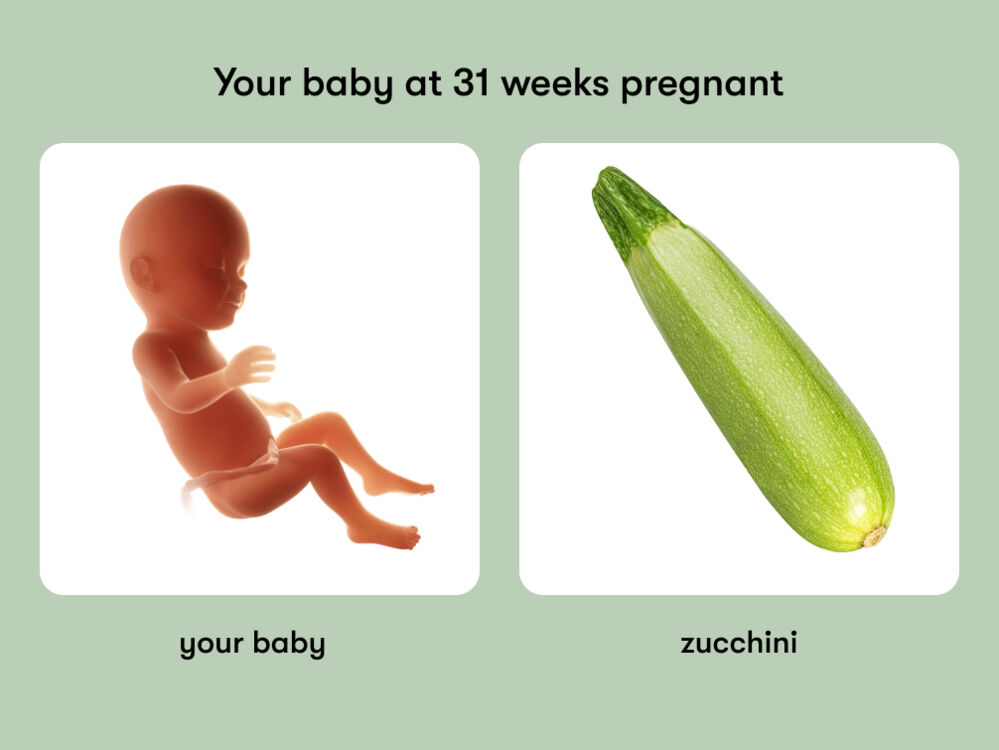At 31 weeks pregnant, you’re well into your third trimester, and there’s not much left to go before you welcome your baby into the world. You might be feeling a mix of joy, anxiety, excitement, and … back pain. Your changing body and growing bump may mean that you’re developing new aches and pains, and you may not have been able to see your feet for a little while now. To give you more of an insight into what’s happening at 31 weeks pregnant, here’s the lowdown on some of the possible developments with your body and your baby.
Your baby at 31 weeks pregnant
Baby recognizes voices
You may have seen people reading to their pregnant bump before bed and wondered why you’d do this. Amazingly, by this point in your third trimester, your baby will be able to hear your voice (and the voices of other people around you so long as they’re close to your bump) and may even recognize your voice. If you want your baby to listen to the same music artist as you, grab some headphones, rest them on your bump, and introduce them to your favorite playlist.
Baby looks more baby-like
As you move through your third trimester and your due date is high on your mind, you might be increasingly curious about what your baby will look like when they’re born. While it’s impossible to know for sure until you see them, your baby has gone through monumental changes over the last 31 weeks. While they start out as a bundle of cells and then look a little bit like a shrimp, by 31 weeks, your baby will look increasingly baby-like.
How big is a baby at 31 weeks?
Length (crown to heel): 41.8 cm or 16.5 in
Weight: 1.8 kg or 3.9 lb
Size: Equivalent to a zucchini
All measurements are approximate and vary within the normal range.



